|
Situated near the banks of the To Lich River, the ancient village
of Hoa Muc in Trung Hoa, Cau Giay District of Hanoi is known for many
relics that are closely connected with its cultural and religious life
dating back hundreds of years. Historically it was known as a defensive
line against foreign invaders. The Village serves as a precious historical
treasure which has been preserved in the mind of the villagers and the
Hanoians as well.
|
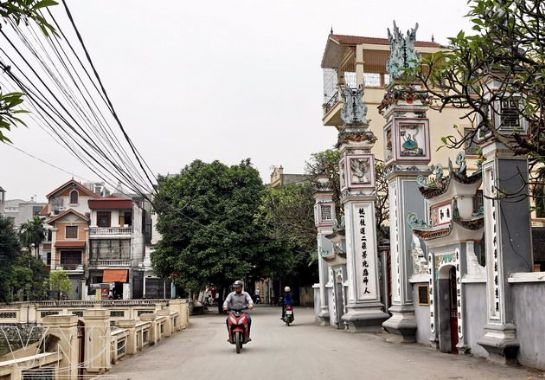
Hoa Muc Village has many relics which have been
classified by the State.
|
|
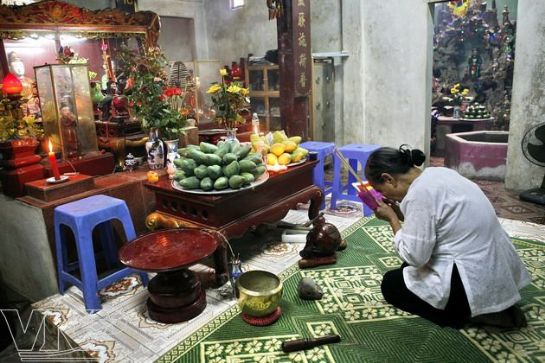
Hoa Muc Village's
communal house is the place where local villagers come for
worshipping
during Tet (lunar New Year Holidays) or ritual
ceremonies.
|
|
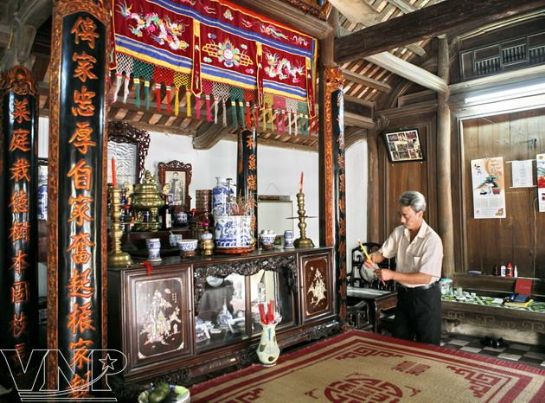
Generations of Lai Tien Son's family live in
this 100-year-old house
where they have preserved traditional
customs of the Viet family.
|
|
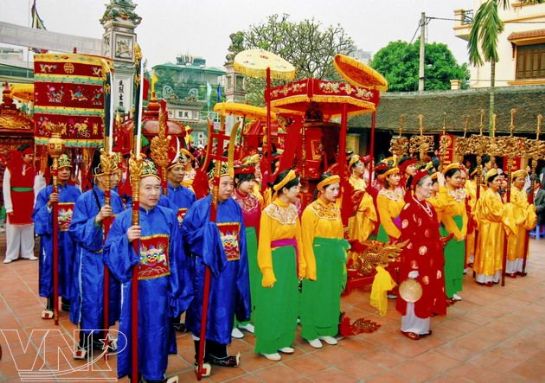
nbsp;Hoa
Muc Village's festival is held annually on lunar February 12,
attracting many visitors.
|
|

Singing Quan Ho (love duet) songs on the lake
in front of Hoa Muc Village's communal house.
|
|
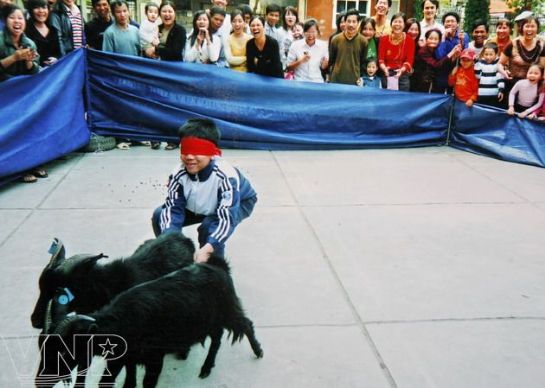
Playing the
hide-and-seek game at the village festival.nbsp;
|
|
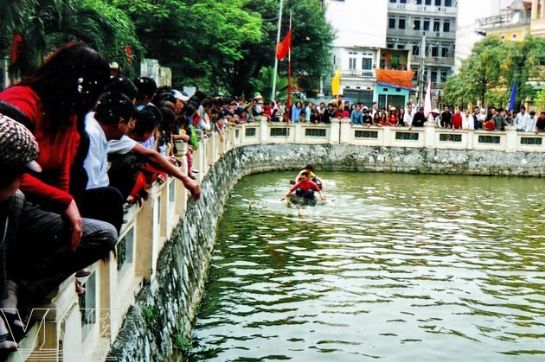
Villagers and visitors watching folk games at
the village festival.
| nbsp;
Legend has it
that Hoa Muc Village was formed during the Hung King Dynasty (from 2879 BC
to 258 BC according to “Dai Viet Su Ky Toan Thu”). In 40 AD, the fighting
led by the two Trung Sisters against the Ma Yuan invaders
(Han Dynasty) took place in this village. During the battles, two
female generals of the Trung Sisters’s troops died and the villagers
erected the Hai Co Temple to worship them. Inside the Temple there is a
stele of the Chinh Hoa Year (1680-1705) with inscriptions about the
restoration of the Temple. In the 5th century Hoa Muc Village
was renamed Trang Nhan Muc in Dich Vong District.
In the
8th century the Village witnessed the death of Queen Pham Thi
Uyen who was a niece of Bo Cai Dai Vuong (Loyal Highest) Phung Hung during
her unyielding fighting against the foreign aggressors. Following the
Queen’s example, Pham Mien and Pham Huy, the younger brothers of the Queen
joined Phung Hung’s army to fight the enemy. When peace returned to the
country, Loyal Highest Phung Hung visited the old battlefield. Seeing that
the area was safe he ordered the construction of a royal palace and a
temple dedicated to his niece and nephews, and instructed the villagers to
do business. Now the communal house of Hoa Muc Village worships Bo Cai Dai
Vuong Phung Hung who is considered the saint of the village.
During the Le
Dynasty (15th century), Hoa Muc Village was a firm battlefield
where important orientations were set out to defeat the Ming invaders. In
the late 19th
century when advancing from the South to the North, King Quang Trung also
used the Village for military purposes.
At present
Hoa Muc Village still preserves a fairly complete system of the oldest
cultural institutions, which under law can not be affected by the wave of
urbanization. It has six relics of different categories, such as a
communal house, temple, shrine, pagoda, ancient well and village gate, of
which the inner communal house, the outer communal house (the royal palace
worshipping the sister and brothers of the Pham family who were credited
with fighting bravely against the foreign invaders) and Duc Anh Temple
have been classified as national relics by the State. Apart from the
relics that are connected to the villagers’ religious life, there are
ancient houses of over 100 years old of great families, such as the Lai,
Nguyen and Phung. 82-year-old Lai Khac Mo, a descendent of an old, large
family in the village said: “The ancient houses are made of wood and have
delicate designs. The beams and frames are connected by wooden joints and
bolts which can be easily assembled and untied and are carved with
beautiful decorative patterns similar to those in the royal palace of the
Nguyen Dynasty (1802-1945). A music researcher came here to do research
and said that Hoa Muc ancient village can be turned into an open museum of
ethnology.”
With its
treasure, Hoa Muc Village is a typical traditional village in the northern
delta of Vietnam.
Story: Huu
Tuan
Photos: Tat
Son
nbsp; |